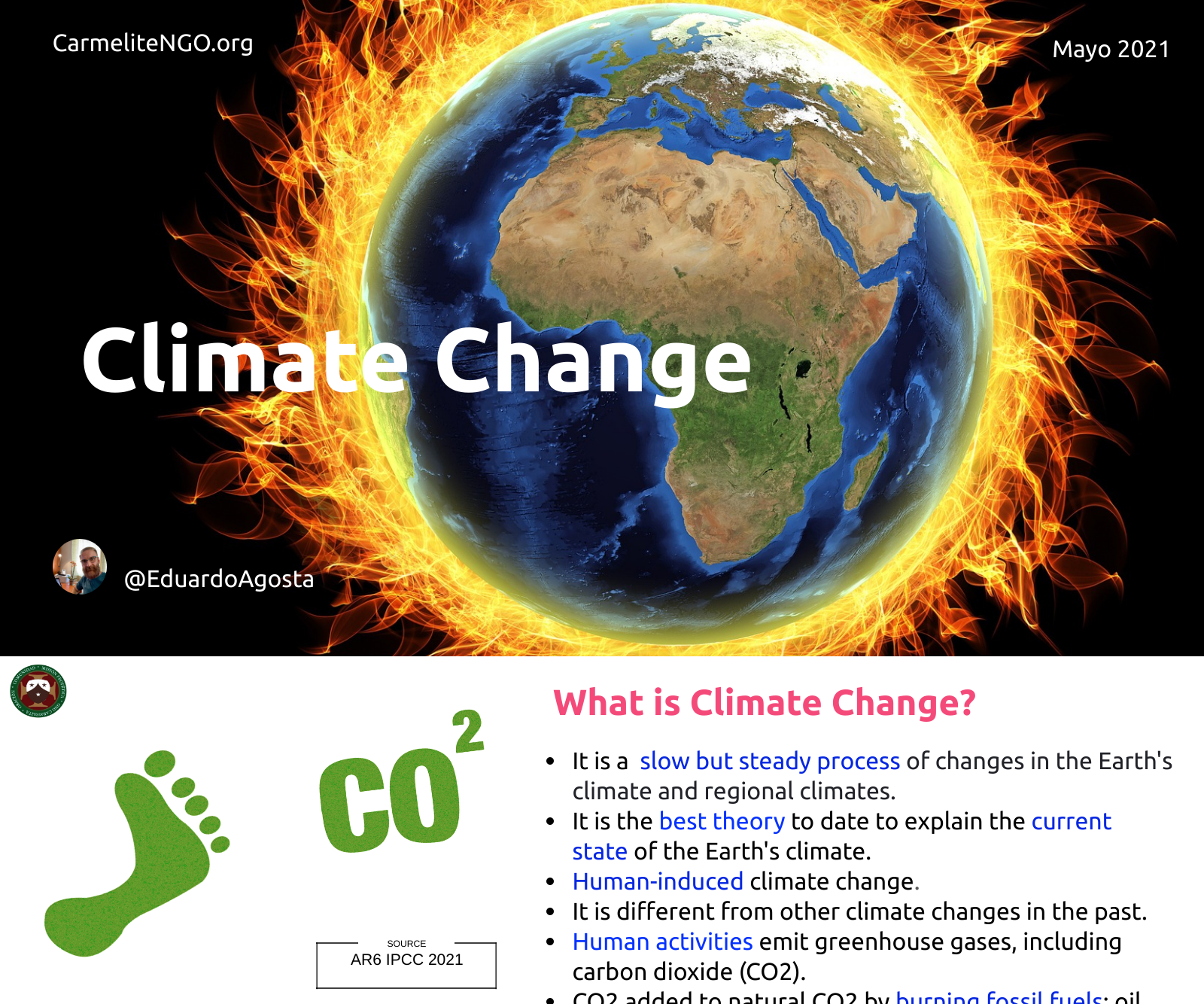
There is still some confusion about climate change among the general public but particularly among college and high school students due to “a number of myths about climate change propagated by blogs and the media.” (Benestad et al., 2016, p. 699-700).
The infographic 1 presents a general definition of the concept of climate change and the main indicator, which is the global mean surface temperature anomaly in the instrumental period.
The infographic 2 presents global indicators of change currently observed and their expected projection for 2100 according to Global Climate Models.
Se trata de conocimientos probados por la comunidad científica global especializada en el área de clima terrestre. En este sentido, el trabajo de Benestad y colaboradores (2016) indica que sólo un 2% de los artículos científicos dedicados al tema pone en duda la teoría del cambio climático a causa de una “evaluación insuficiente del modelo, lo cual conduce a resultados que no son universalmente válidos, sino que son un artefacto de una configuración experimental particular” o por la presencia de “dicotomías falsas, métodos estadísticos inadecuados o conclusiones basadas en una física errónea o incompleta” (p. 699).
Finally, the infographic 3 puts into historical perspective the evolution of the essence of the concept of climate change, which is the existence of an anomaly in the greenhouse effect of the atmosphere.
The selection of the most important milestones in climate change theory is not easy, especially since the second half of the last century, due to the accumulation of results thanks to the global coordination of the observing system after World War II through the World Meteorological Organization, the increasing availability of multivariate data in the satellite era, and the magnificent capacity of computational processing to generate reanalyzed data and develop Global Climate Models.
Bibliographic references of the infographics
Benestad, R.E., Nuccitelli, D., Lewandowsky, S., Hayhoe, K., Hygen, H.O., van Dorland, R. and Cook, J. (2016). Learning from mistakes in climate research. Theoretical Applied Climatology, 126, 699-703. https://doi.org/10.1007/s00704-015-1597-5.
Copernicus, Climate Change Services (May 6, 2021). Climate Indicators (website). https://climate.copernicus.eu/climate-indicators
Bereiter, B., Eggleston, S., Schmitt, J., Nehrbass-Ahles, C., Stocker, T.F., Fischer, H., Kipfstuhl, S. and Chappellaz, J.A. (2015). Revision of the EPICA Dome C CO2 record from 800 to 600 kyr before present. Geophysical Research Letters. doi: 10.1002/2014GL061957.
Hersbach, H., Brönnimann, S., Haimberger, L., Mayer, M., Villiger, L., Comeaux, J., … Worley, S. J. (2017). The potential value of early (1939–1967) upper-air data
in atmospheric climate reanalysis. Quarterly Journal of the Royal Meteorological Society, 143, 1197–1210. https://doi.org/10.1002/qj.3040
IPCC (2018). Global Warming of 1.5°C. An IPCC Special Report on the impacts of global warming of 1.5°C above pre-industrial levels and related global greenhouse gas emission pathways, in the context of strengthening the global response to the threat of climate change, sustainable development, and efforts to eradicate poverty [Masson-Delmotte, V., P. Zhai, H.-O. Pörtner, D. Roberts, J. Skea, P.R. Shukla, A. Pirani, W. Moufouma-Okia, C. Péan, R. Pidcock, S. Connors, J.B.R. Matthews, Y. Chen, X. Zhou, M.I. Gomis, E. Lonnoy, T. Maycock, M. Tignor, and T. Waterfield (eds.)]. In Press. https://www.ipcc.ch/sr15/
Le Treut, H., Somerville, R., Cubasch, U., Ding, Y., Mauritzen, C., Mokssit, A., Peterson, T. y Prather, M. (2007). Historical Overview of Climate Change. En Solomon, S., Qin, D., Manning, M., Chen, Z., Marquis, M., Averyt, K.B., Tignor, M. and Miller, H.L. (eds.) Climate Change 2007: The Physical Science Basis. Contribution of Working Group I to the Fourth Assessment Report of the Intergovernmental Panel on Climate Change [AR4 IPCC 2007]. Cambridge University Press, http://www.ipcc.ch/pdf/assessment-report/ar4/wg1/ar4-wg1-chapter1.pdf
NOAA-ESRL, GMD (May 6, 2021). Carbon Cycle Greenhouse Gases. Global Monitoring Laboratory (sitio web). https://www.esrl.noaa.gov/gmd/ccgg/trends/